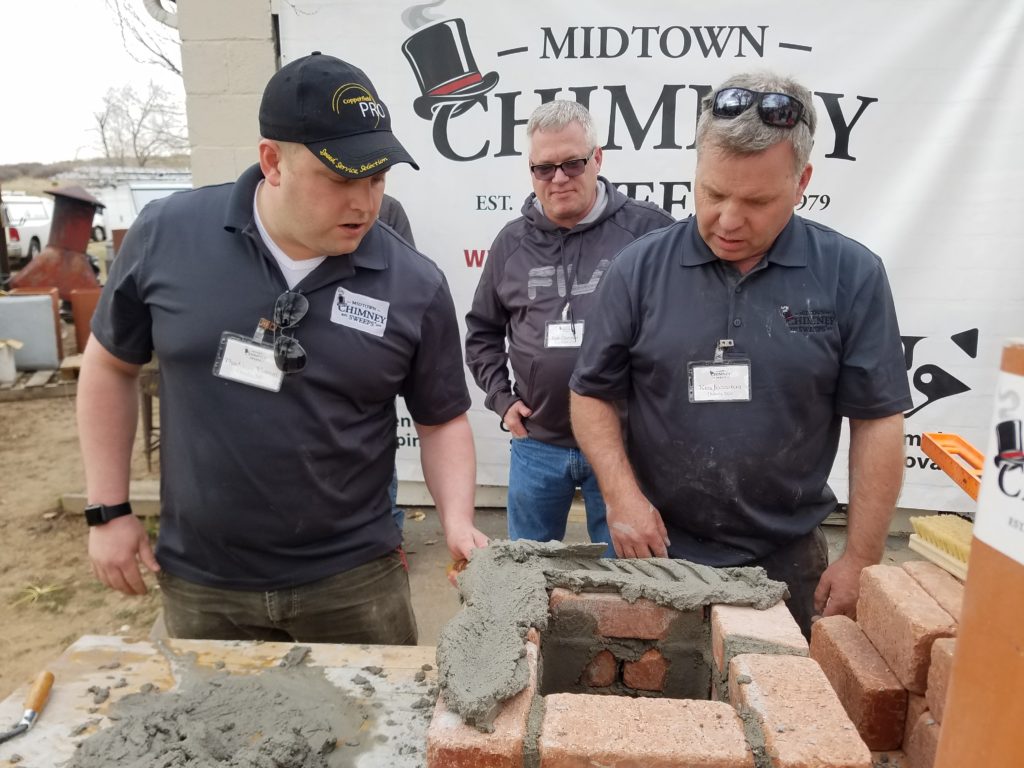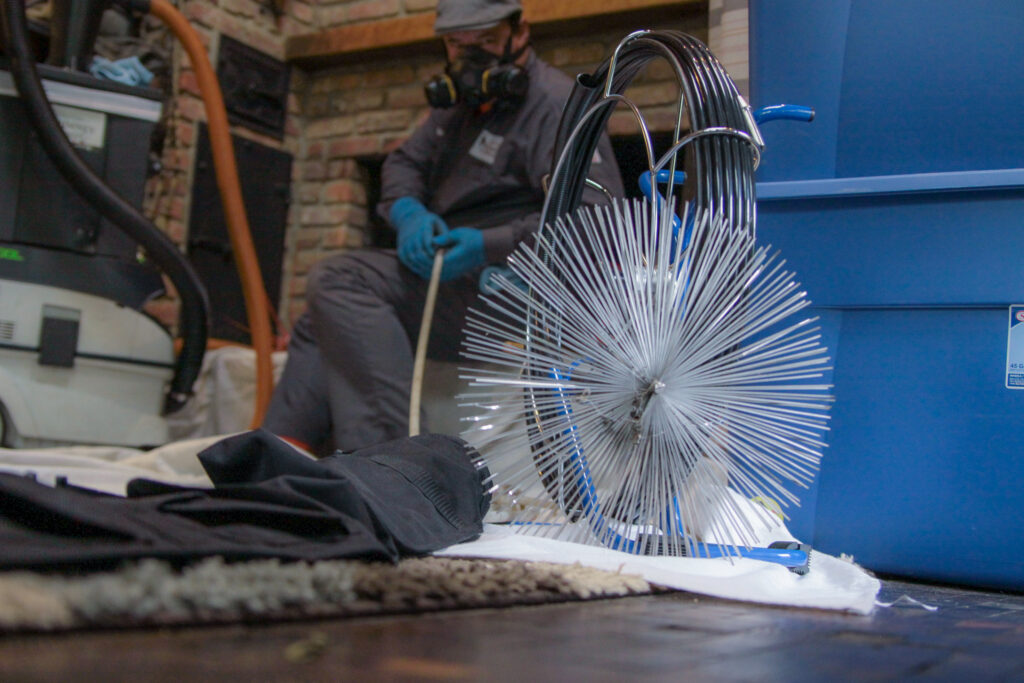The Importance of Chimney Sweeping
At its core, chimney sweeping is all about safety and efficiency. Over time, burning and usage of your fireplace generates a build-up of soot, debris, and creosote (with wood-burning applicances) along the inner walls of the chimney. If this build-up is not addressed, it will drastically reduce your chimney efficiency and, more critically, increase the risk of a chimney fire.
Regular chimney sweeping is vital for:
Fire Safety:
Over time, creosote and soot build up inside your chimney. These substances are highly flammable and can cause dangerous chimney fires if not removed regularly.’
Efficient Heating:
A clean chimney allows your fireplace to burn more efficiently, providing better heat output and saving you money on fuel.
Preventing Blockages:
Debris such as leaves, twigs, and even animal nests can block your chimney, preventing proper ventilation and causing smoke to enter your home.
Extending Chimney Life:
At Midtown Chimney, we want your Chimney to last a lifetime, while saving you money. Regular cleaning and maintenance can extend the lifespan of your chimney, reducing the need for costly repairs or replacements.
In addition to chimney cleaning, we offer comprehensive fireplace cleaning services. Keeping your fireplace clean is essential for both safety and aesthetics. Choosing Midtown Chimney Sweeps means opting for over 40 years of experience in our industry and professional, courteous service every single time!
Our Fireplace Cleaning services include, but not limited to:
Ash and Soot Removal:
We remove built-up ash and soot from the firebox, preventing blockages and reducing unpleasant odors.
Glass Door Cleaning:
If your fireplace has glass doors, we clean them thoroughly to remove soot and smoke stains, ensuring a clear view of the fire.
Grate and Andiron Cleaning:
We clean and inspect the grate and andirons, ensuring they are free of debris and in good condition.
Why Choose Midtown Chimney Sweeps?
At Midtown Chimney Sweeps, we are not just experts in our field; we are also your dependable neighbors. We prioritize the safety of our community and tirelessly stay up to date with local regulations and best practices, ensuring that each chimney sweep and fireplace cleaning is carried out with the utmost care and attention to detail. We understand that your home is more than just a place to live – it’s a sanctuary for your loved ones. That’s why we approach chimney sweeping as not just a service but a responsibility to protect lives, families, and homes. With Midtown Chimney Sweeps, you can rest easy knowing our skilled chimney contractors have the expertise and commitment to providing top-quality chimney and fireplace cleaning care. We are making your neighborhood safer, one chimney at a time.
Our professional chimney sweeps offer numerous benefits:
Licensed, insured, and qualified technicians:
Outr team of experienced and qualified techncians ensure high-qualityer service and attention to detail at every job
We provide thorough cleaning for both chimney and fireplaces, complete with photos and a live camera scan.
We know that cost is important when prices everywhere are skyrocketing. We strive to remain competitve with our pricing for the thorough and professional service you will recieve at Midtown Chimney Sweeps.
A Dedication to our Customers and our Industry
Our commitment to customer satisfaction means we will go the extra mile to ensure you are happy with our service and that your fireplace and chimney operate safetly and efficiently.
We make Booking with us easy!
We always answer the phone! With our friendly, qualified scheduling center, we will answer the phone when you call, answer any questions you have, and get you scheduled for your next appointment. We also offer comprehensive and easy online booking. Just enter in your zip code and get started!
show less

